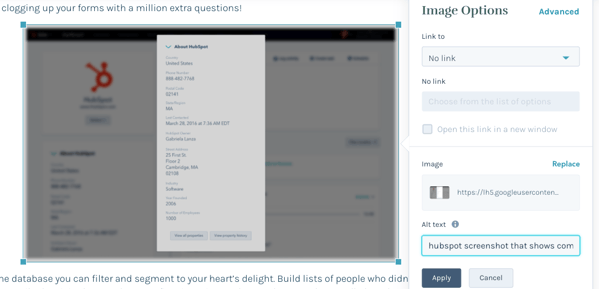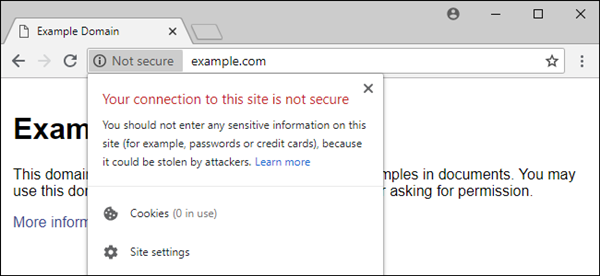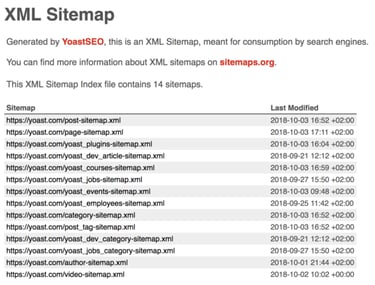One of the best ways to find new customers is by showing up in search engines. People are always looking for solutions to their problems online. If you do everything right, you can appear as the #1 answer to what they need!
Showing up on the first page of search results means you don’t have to pay for leads or traffic. It also establishes immediate credibility for the reader.
Search engine optimization (SEO) is how you make your content show up on search engines. Bots regularly ‘crawl’ and analyze your site and rank you based on a huge number of factors. The better your ranking for a keyword, the more likely you’ll show up in the top results when someone searches for it.
A lot of SEO has to do with the topics and keywords of your site. But what if you spend hours creating the perfect content and you still can’t seem to show up anywhere except the black abyss that is the second page of Google search results?
There’s a whole other aspect of SEO you need to consider: the technical side. There are a number of hidden technical problems that could be negatively impacting your website’s search rankings. Here are a few of the most common issues and what to do about them.
#1: Poor mobile experience
Be honest: how patient are you when you’re using your phone to look something up?
If a site takes more than a couple of seconds to load, you’ll probably abandon ship and try the next link instead.
And if the text is too small or the site too hard to navigate, it’s no different.
The vast majority of online searches take place on a phone (and increasingly, by voice). Users expect your site to load quickly, be easily readable, and to find the information they’re looking for in a matter of seconds.
Google knows this, so the more mobile-optimized your site is, the higher you’ll rank.
You can use Google’s free PageSpeed Insights tool to check the load time of your website and get actionable suggestions for improvement. In general, if it takes more than two seconds, you should compress file sizes (like photos), reduce the number of plug-ins, or cut down on custom code.
When designing your site, be sure to use responsive design that adjusts so all elements are readable and clickable on any size screen. If you’re not a developer, try using HubSpot’s responsive templates that are pre-built to look great on mobile.

#2: Not updating your alt text
A picture says 1000 words… unless you’re a search engine, in which case the average picture says 0 words.
It can be tempting to fill your blog posts and website pages with all kinds of beautiful images and graphics. It’s a great way to break up your content and make it more appealing to the reader.
But without alt text that provides a description of each photo, you’re not giving a full picture of what’s on the page. Bots might have a hard time understanding what the page is about. This will lower your search ranking.
Alt text is added to your photos by default, but it’s based on the name of the file. If the alt text for all your photos is something like ‘Screenshot.04.11.2021’ or a random string of numbers and letters, you need to update it to something more meaningful to Google.
Your text should be clear, descriptive, and include at least one of the keywords you’re hoping to rank for. Thankfully, HubSpot’s tools make it easy to add in alt text!

#3: Duplicate content
Do some of your site’s pages say essentially the same thing? Do you use the same module with the exact same text (such as an About Us section) on every page? Do you have different versions of the same page (for example, one home page that starts with ‘www.’ and one that doesn’t)?
Duplicate content confuses Google (and your readers!) and can have a significant impact on your ranking.
Make sure that each of your pages has unique copy. If you have two with similar content, try combining them OR fleshing them out with additional information that the reader would want to know. You can also set up a redirect to remove any duplicate versions of the same page or add a ‘noindex’ tag to the header code of a certain page if you don’t want Google to list it in search results.
You may not even be aware of some of your duplicate content! If you’ve taken a page out of your navigation, it could still be indexed by Google even if you forget about it. Search “site: yoururl.com” in Google to get a full picture of every page that could be showing up for users.
#4: Broken links
When you search for a term, Google crawls every link that’s ever been published to find the answer for you. Links to, from, and on your site show Google that you’re maintaining your site and regularly publishing and updating helpful content.
When links are broken, they have the opposite effect. That’s when you’re in trouble.
Broken internal links (links from one page of your site to another) confuse search engines because they don’t know how the page ranks in the grand scheme of your site. They’re also a huge headache for your reader!
If you have broken external links (links leading to your site from another site), you’re missing out on all the credibility and authority those backlinks bring to your domain. For more information on how to get backlinks, check out our blog post with seven methods to use and three to avoid.
But don’t worry: you don’t have to go through your site and click every link to find out if any are broken. There are lots of free and paid tools available, such as brokenlinkcheck.com.
#5: No HTTPS security
Has your browser ever warned you that a site isn’t safe and you shouldn’t enter your personal information? It doesn’t exactly give you confidence that this is a reputable brand worthy of your hard-earned money.

If your site doesn’t have an SSL certificate, you might be giving this same warning to your readers. An easy way to check is to make sure your website URL starts with “https”, not just “http”.
Installing the certificate is a simple process that has a big impact, so ask your developer to be sure you don’t miss this one!
#6: Missing meta descriptions
When you’re asking a question on Google, you most likely read the title and the snippet of the top few results and click on the one that sounds like it will answer your question.
Search engines work in the exact same way. So when meta descriptions are missing, you’re (once again) upsetting both humans and robots.
Make sure that every page of your site has a short but thorough meta description. Think: how can I sum up the contents of this page in one sentence?
If you’re using HubSpot, the system will prompt you to add a meta description to all pages!

#7: Not using title or header tags
A title tag tells search engines what your content is about. When you’re reading the list of your search results, Google uses the title tag to give you each clickable option.
After clicking on the most promising title, you probably scroll through and scan the headers to quickly find what you’re looking for.
Your readers don’t like trying to navigate through a wall of text to find a piece of information. Search engines are no different! Making your content clean, organized, and easy to scan is essential.
Use headers and subheaders throughout your pages and then use header tags to distinguish them from the rest of your content. HubSpot users have it easy: highlight your desired text and select the appropriate header option to automatically add header tags.

#8: No site map
There are few things more frustrating than when you can’t find a specific page on a website. You can’t get anywhere no matter where you click and the site structure seems like a dead-end maze.
Crawlers can have the same issue. If you want Google to properly search your website, you need to logically design your site using a sitemap.
An XML sitemap tells search engines exactly how your site is laid out and how the pages are interconnected. The closer a page is to your home page (e.g. accessible from one or two clicks rather than 10), the more likely it is to rank well in search engines.
You’ll need to build an XML sitemap and submit it to search engines. It’s even easier if you’re a HubSpot customer! HubSpot automatically generates the file for you as you add new pages. There are also plenty of tools out there to help you along. To learn more about sitemaps, check out this guide by HubSpot.

And there you have it! There are so many things to keep in mind when optimizing your website for search. If you neglect the behind-the-scenes technical items, your rankings will suffer.
Do you need help showing up on search engines or fixing up your pages in HubSpot? We can help! Click here to learn more about our services.



